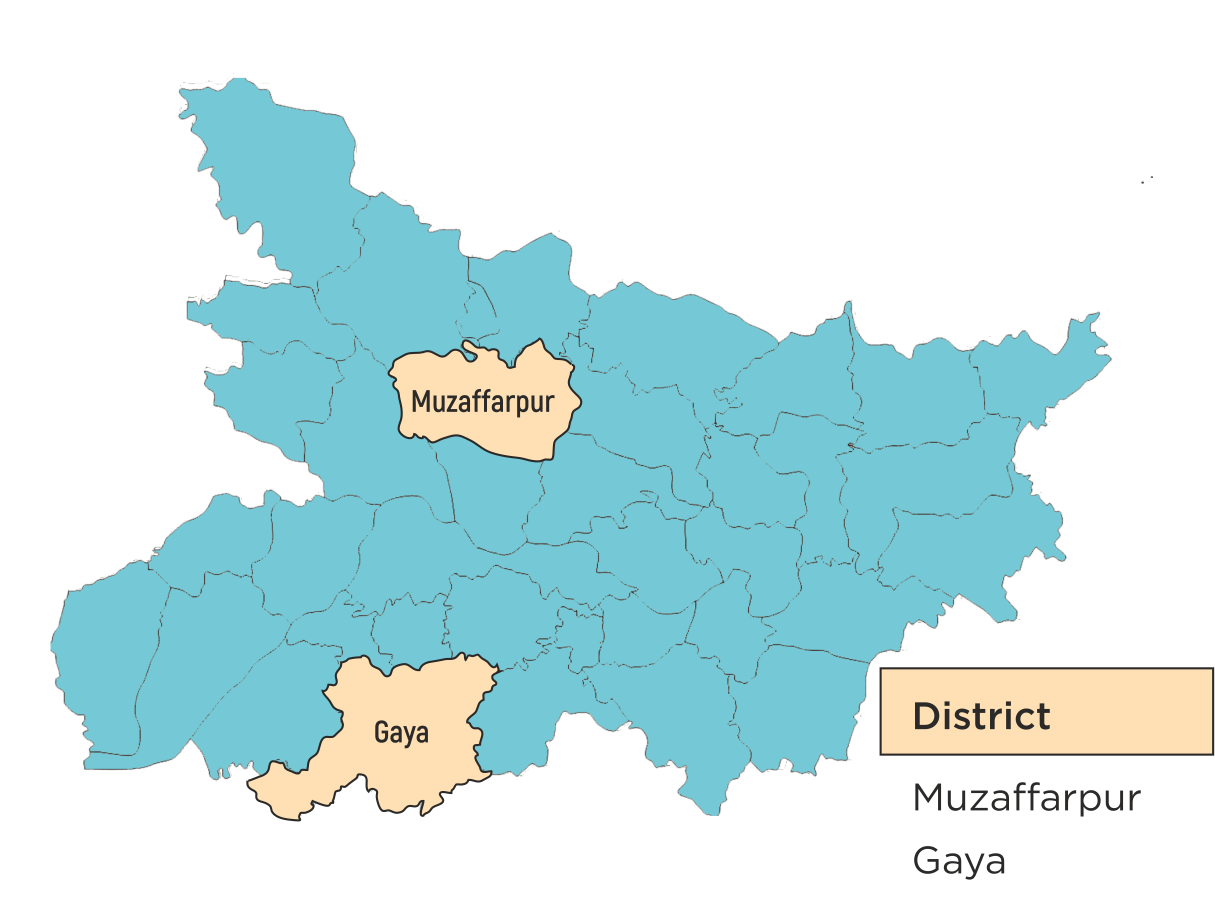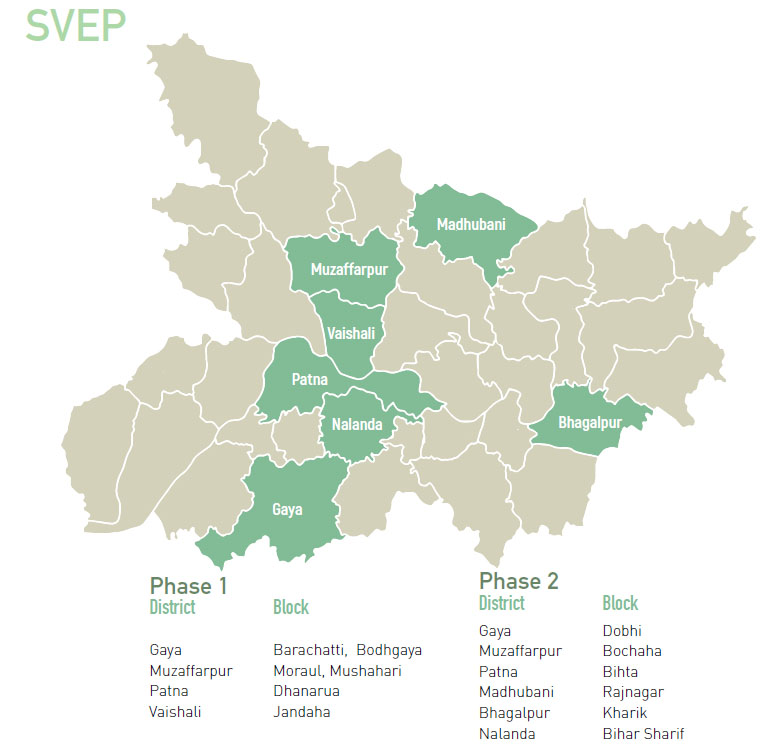Background
Bihar is the 13th largest state of India, with the 3rd largest population living in an area of 94,163 sq km. According to the 2011 census, the state has a population of 10.41 crore people, out of which only 11.29% live in urban areas and the rest in rural areas. The state has a literacy rate of 61.80%. Bihar is an amalgamation of three main regions – Magadh, Mithila and Bhojpur. It is an entirely land-locked state, bounded by Nepal in the north and by Jharkhand in the south. Bihar is one of India’s most historically and culturally rich states. The Magadh Empire, Nalanda, Budhhism, Madhubani painting and Bhagalpuri silk have their origins in Bihar. The rural population is primarily engaged in agriculture, and they are the largest producers of vegetables in the country.
The Bihar Panchayati Raj Act, 1993 was passed in accordance with the 73rd Constitution Amendment. Panchayats at all the three levels have been entrusted with duties and functions in respect of all the 29 matters listed in the Eleventh Schedule of the Constitution. Bihar Rural Livelihoods Promotion Society (BRLPS), an autonomous organisation set up by the Government of Bihar and supported by the World Bank is spearheading the task of enhancing the social and economic empowerment of the rural poor in the state.
Kudumbashree NRO has been working with the Bihar Rural Livelihoods Promotion Society in two major domains- MEC project and SVEP.
MEC Project
Under the MEC project, Kudumbashree NRO initially started its project in the year 2012 for a period of three years. The work was carried out in Gaya and Muzaffarpur districts of the state. The main objectives of the project were
- Creation of sustainable livelihoods for rural people through self employment initiatives
- Provide community level handholding support through trained MEC
- Enable SRLM to formulate state policy for enterprise promotion and support

At the end of the project period (three years) a post mid term review was conducted after which it was extended for another year till 2016. Some of the main activities that were conducted under this period were the selection and capacity building of the MEC. This was a yearlong activity. Subsequently, the benchmarking and marketing assessment of existing enterprises in villages of the district was also done. Concurrently, the primary activity of enterprise development was initiated. To monitor the health of the enterprises started under the project, training on Performance Tracking System (PTS) was also imparted to the MECs. Towards the end of the project, some of the better performing MECs were also selected and trained to work as trainers for new project areas and SVEP. The MEC Policy was also rolled out by the SRLM, based on which MEC groups signed an agreement with the CLFs for further enterprise promotion and support.
| Domain Footprint | |
|
Districts |
2 |
|
Blocks |
15 |
|
Micro Enterprise Consultants (MEC) |
200 |
|
Micro Enterprise Consultant Groups |
9 |
|
Micro Enterprises promoted |
1068 |
|
Mentors |
4 |
Start-up Village Entrepreneurship Programme
The MoU between JEEVIKA (Bihar SRLM) and KS NRO was signed in January 2016 for implementing SVEP in 6 blocks. In Phase I, SVEP project is being implemented in Barachatti and Bodhgaya blocks of Gaya district, Moraul and Mushahari in Muzaffarpur district, Dhanarua in Patna district and Jandaha in Vaishali district for a period of four years. In the year 2018, six more Blocks were taken up (Phase 2) that included Dobhi block in Gaya district, Bochaha in Muzaffarpur district, Bihta in Patna district, Rajnagar in Madhubani district, Kharik in Bhagalpur district and Bihar Sharif in Nalanda district.
The project which aims at promoting non-farm based livelihoods started with selecting CRPs-EP and equipping them with business skills through training programs. The CRPs-EP were trained for 42 days on soft skills and business management. These training sessions have helped the CRPs-EP hone their business acumen and handle business plans proficiently. The CRPs-EP while working in a group have been generating income by delivering the services to the entrepreneurs as per the project guidelines. These groups have established more than 3000 enterprises in the Phase I blocks. The project has helped in creating impact in the form of increase in the household income of entrepreneurs, local innovations by CRP-EP, increase in the capacity of the community based organisation in promoting entrepreneurship, different types of enterprises being promoted and sustainability of enterprises.
As of March 2020, 12,463 enterprises have been supported by CRPs-EP across 12 blocks.

SVEP project status in Bihar as of June 2020
|
No. of Blocks |
12 |
|
No. of CRPs-EP trained |
Phase 1 Blocks - 212 Phase 2 Blocks - 161 |
|
Total Target till March 2020 |
Phase 1 Blocks - 10744 Phase 2 Blocks - 4500 |
|
Number of enterprises supported till March 2020 |
Phase 1 Blocks - 7956 Phase 2 Blocks - 4507 |
|
Number of Mentors deployed |
12 |
|
Number of BAPs deployed |
03 |
|
Number of Professional(s) |
04 |